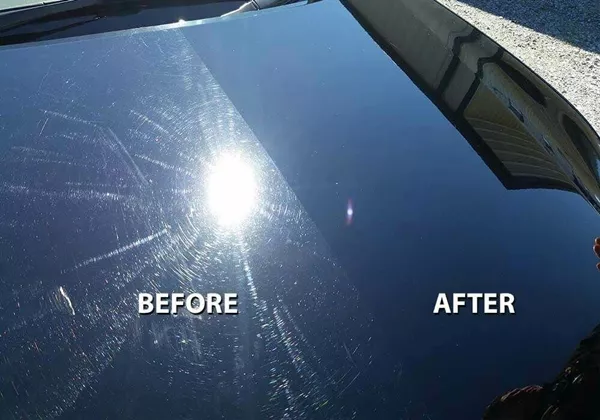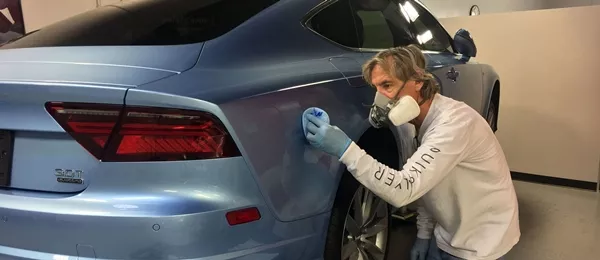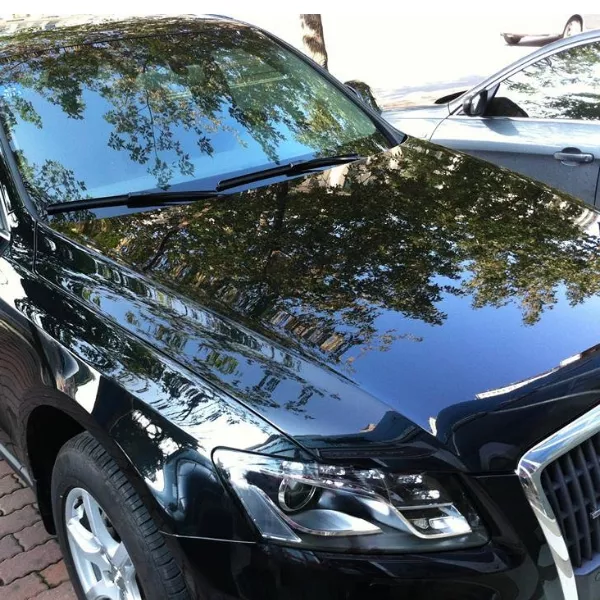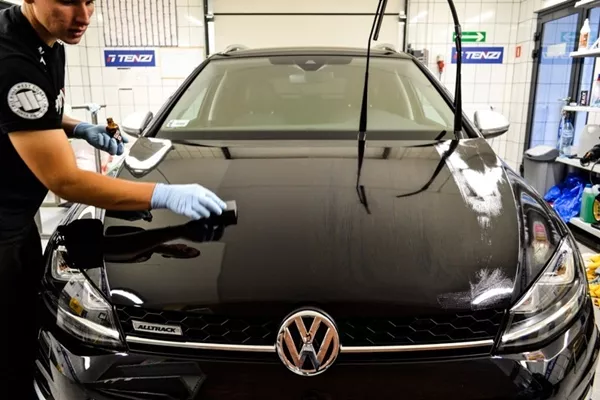Protecting the paint job of your car needs the best auto ceramic treatment. But before having it done, get the facts straight. Detailing your car with a 9h or 10h graphite hardness rating for auto ceramic application is probably one of the best ways to preserve and prolong its paint job.

Protecting the paint job of your car needs the best auto ceramic treatment
In an attempt to sell more auto ceramic packages, there are ratings of 9h or 10h graphite hardness -- even 12h! Typically, the harder it gets the more expensive as well. Let’s go over everything with Philkotse.com and deconstruct the truth about the 9h or 10h graphite hardness rating for these auto ceramic formulas. A few have claims of 12h hardness which is the hardest solution anyone can apply.
1. Ceramic coating can prevent scratching -- period
Yes, there’s protection, of course. Just don’t expect it to act like armor on your car!

Ceramic coating can prevent scratching -- period
Ceramic coating is applied in layers that are very thin. Anything harder than a 9h or 10h rating will scratch it no matter what. All these claims are problematic because you cannot try out the product for free. It will be trial-and-error at most should you want to find out more.
>>> Check out:
- Ceramic Coating in the Philippines: Overview of costs, advantages, process & more.
- What is the best application of nano ceramic coating for cars to use?
2. What are “nano, ceramic, and glass” coatings?
By definition, the ceramic coating is a liquid polymer that adheres to the top coat of the car. It seals the surface by forming a thin film over the top layer. It creates an elastic surface by adding several layers for protection.

Ceramic coating is a liquid polymer that adheres to the topcoat of the car
It seems to be a misnomer because polymers aren’t nanoparticles; neither is it glass because it is a liquid fluid that is a form of plastic. Auto ceramics are marketing terms using more resilient and harder materials to describe a liquid polymer, plastic solution which it is not. Having more than one layer or several will provide enough protection from many things -- although harder objects like fingernails can scratch it.
3. Testing for 9h, 10h, and 12h properties
One of the several ways auto ceramic companies justify their product rating is by testing them.

One of several ways auto ceramic companies justify their product rating is by testing them
But some unscrupulous companies will falsify findings to make their products appear superior. To avoid getting criticized for mislabeled products, some companies just stay away from the 9h, 10h, and 12h ratings which some companies are advertising already.
>>> Also useful to know: 6 steps to avoid water spots on your beloved car.
4. All about coatings and the car body layer, substrate layer
If you’re thinking of getting an auto ceramic treatment, this is something that should be read.
For car buffs, the substrate is the part of the car body where the liquid polymer or auto ceramic is applied in layers to protect it. When applied, that includes waxes, kinds of car paint or any material that can adhere to it, including auto “ceramics.”
One can easily mistake auto ceramic treatment or liquid polymer as tough because it has already adhered to the car body. Try your nail to scratch it and see what happens.

If you’re thinking of getting an auto ceramic treatment, this is something that should be read
5. A hard object cannot damage a ceramic coating
Most auto ceramic treatments will boast of 9h, 10h, and 12h as impregnable hardness that even rocks can’t scratch. This is misleading, and a simple test is to try scratching the cured film yourself. A fingernail or harder material will make a scratch or even dig into the lower layer too! In plain English, it does mean that harder objects will easily prove that auto ceramic treatment is not everything it is supposed to be.
>>> You might concern: How to protect your car from scratch: 6 easy ways to know.

Most auto ceramic treatments will boast of 9h, 10h, and 12h as impregnable hardness that even rocks can’t scratch
As of this writing, there are many detailers offering a 9h or 10h graphite hardness rating for auto ceramic application with claims that it’s the ultimate auto paint protection for cars. The problem is that facts point to the contrary. You’ll need all the pertinent facts to get everything in perspective, to decide based on actual facts.
Recent posts
- [Philkotse guide] About self-cleaning car paints: Ultra-Ever Dry Nov 30, 2022
- Top 4 reasons why leaning on car can damage car paint Nov 30, 2022
- Car repainting: 11 things you need to know Aug 04, 2020
- Car Paint Protection Film: Yay or Nay? Aug 04, 2020
- 3 DIY tips to remove oxidation signs from your car paint Oct 23, 2020











